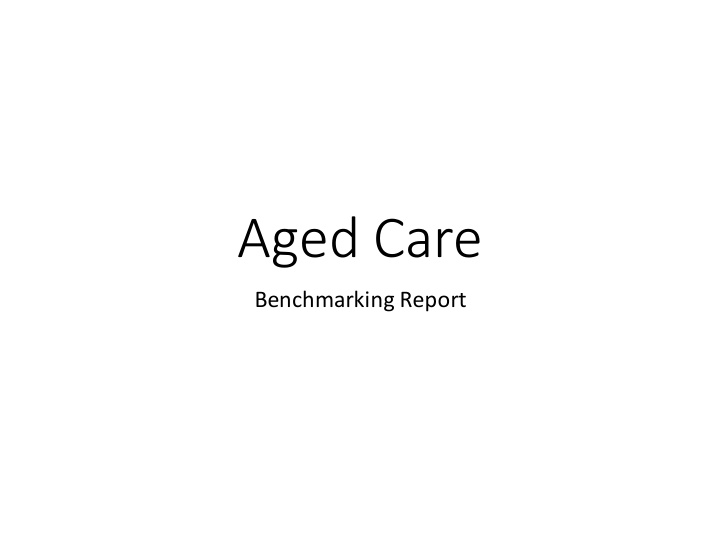



Aged Care Benchmarking Report
Key Findings • We’re currently spending 2 million dollars p.a. on waste disposal and recycling • 85% of this is spent on disposal to landfill • 15% of this is spent on recycling • Our predominant waste is Adult Hygiene Products (AHP) • 43% of our general waste bins are currently recyclable content by volume
Key Findings • 72% of sites are recycling Cardboard & Paper • 49% of sites are recycling Comingled • 8% of sites are recycling Food and Garden Organics
$1,400,000 p.a. Landfill Recycling $1,700,000 85% $300,000 15%
Key Actions • Reduce waste management costs across all organisations • Divert 11,295 m 3 of recyclable content from landfill • Recycle 50% of cardboard & paper and comingled currently going to landfill • Recycling 50% of food waste and garden organics represents some serious savings across the sites
$1,400,000 p.a. Landfill Recycling $950,000 68% $450,000 32%
Key Outcomes • Implementation: • Recycling Cardboard & Paper and Comingled across all sites at 75-80% • Recycling of Garden Organics across all sites at 75-80% • Recycling of Food Waste across all sites at 50-60% • General waste bins reduced or lift frequencies reduced across all sites • Education: • Educational tool rolled out • Delivery to key personnel • Audit and assessment training for monitoring staff • Benchmarking • Benchmarking reporting
Cost per cubic metre for general waste per site
Fees per 240L general waste bin service
Current Habits • Across the 114 sites, we are disposing of approximately 65,000m 3 of waste per annum. Which equates to around 3 Olympic swimming pools of waste each year! • More than 40 % of this can be recycled. • That’s a further 26,000m 3 we can divert from landfill as an industry sector in NSW
Recycling Habits • 23% of sites did not have any recycling service • Cardboard & Paper and Comingled recycling are 30- 40% cheaper than general waste • Per bed averages (per annum): • Recycled volume per site is 835L • Recyclable content taken to landfill is 3,031L
Percentage of sites recycling
Cardboard & Paper Organics Food Waste and/or Garden Organics 7% No recycling services 23% Cardboard and/or Comingled service No Organics service 77% 93%
Bin Contents Volume v. Weight Co-mingled 2% Co-mingled Paper & 14% Cardboard 7% AHP Waste AHP Waste Paper & 43% 36% Cardboard 12% Food Waste 35% Food Waste 15% Residual Waste Garden 21% Organics Garden 2% Organics Residual 2% Waste 11%
Waste Levy • 2015 • Metropolitan: $133.10 • Regional: $ 76.70 • 2014 • Metropolitan: $120.90 • Regional: $ 65.40 • 2013 • Metropolitan: $107.80 • Regional: $ 53.70
Rebates • The organisations that went through the Bin Trim audit process in 2014 are still eligible for rebates • The rebate has now been changed to $1k - $50k • These could be for capital items such as: • Worm Farms • Compactors
Grants for food waste recycling • Grants available to help aged care facilities reduce food waste Aged care facilities are often large generators of food waste, which is likely to be costing facility managers more than they think to dispose of in landfill. • To help reduce waste costs and keep food and garden waste out of landfill, the NSW EPA and Environmental Trust are offering grants of up to $500,000 for equipment to process or pre-process food and garden waste onsite. • The funding is available on a 50:50 basis under Round 3 of the Waste Less, Recycle More Organics Infrastructure (Large and Small) grants. It covers, but is not limited to: • On-site composting systems • On-site commercial size worm farms • Anaerobic digesters • Equipment for food waste avoidance • Ancillary equipment such as on-site bins, signage and lifting equipment • Applications are open until 1 December 2015.
Recommend
More recommend